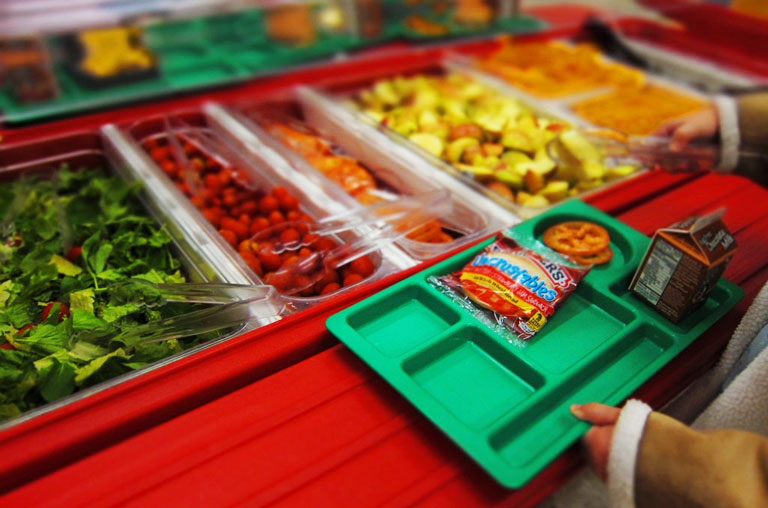
It’s that time of the year again: Students flocking back to school. For many students in college, it’s the time of the year when getting enough nutritious food to eat is a struggle.
There’s a common trope that college students eat ramen noodles. This joke, however, is insidious because it implies that college students shouldn’t strive to eat a healthy diet.
It used to be that federal grants covered tuition and some other expenses, like books. But, with tuition rising across the country, this is history. Now, students struggle to cover all of these expenses, especially low-income students, who often face more serious degrees of food insecurity.
This summer, I worked at the Greater Pittsburgh Community Food Bank (GPCFB). As an intern, I created educational resources and read a recent study by GPCFB, “The Campus Cupboard Study.”
The study looked at hunger on college campuses by surveying college students through an online questionnaire. The University of Pittsburgh Office of Child Development conducted the assessment, which was circulated to students from 11 area colleges, including the University of Pittsburgh, Carnegie Mellon University, and the Community College of Allegheny County. More than 6,000 students answered questions concerning demographics, income, food insecurity, and attitudes toward food banks. This survey found that 29 percent of students “face moderate or high levels of food insecurity, which is more than twice the 12 percent national rate for U.S. adults.” Students recalled skipping meals and eating less because of financial constraints.
GPCFB’s research is far from the only organization to recognize that college students go hungry. The U.S. Government Accountability Office’s (GAO) report, “Food Insecurity: Better Information Could Help Eligible College Students Access Federal Food Assistance Benefits,” reviewed 31 existing studies, though no national data is available.
“Twenty-two of those 31 studies estimate that more than 30 percent of students are food insecure,” The Atlantic reported, which is very similar to what the GBCFB found.
GAO also discovered—after reviewing data supplied by the Department of Education—that almost 2 million students who were eligible for the governmental Supplemental Nutrition Assistance Program (SNAP) did not receive those benefits. The conclusion here was that It seems that more needs to be done to connect students to those benefits. They highlighted initiatives that universities have taken to address food insecurity and also made recommendations targeted at the Food and Nutrition Service, the federal agency responsible for addressing hunger. Recommendations included clarifying SNAP eligibility requirements and a review of how state agencies help students eat.
Another important finding from the GAO and GPCFB reports were that being a first-generation student or a single parent increases the risk of food insecurity. First-generation students face more challenges than other students, such as less access to financial and psychological support. The stigma of being a first-generation student often exacerbates these struggles, as does being a single parent, which means more responsibilities (financial and personal) than a traditional student.
In all of this higher education inequity, hope exists. College campuses are beginning to recognize this very real challenge and some schools already have systems of assistance in place.
“2016 is when our food pantry opened. It was in direct response to a survey that was done by a couple faculty members that found that 46 percent of the students on the campus would describe themselves as food insecure,” said Rebecca Walton, sustainability outreach coordinator at Appalachian State University.
She expressed that food insecurity can mean many things on campus, from having no meal plan money to not being able to buy food if students live off-campus. As part of the sustainability office, Walton explained that “It [food security] falls into our sphere of influence on campus because sustainability is more than just environmental.”
On average, Appalachian State serves 10 students every day at the sustainability office food pantry. Academic departments across campus support the effort through food drives and many will be opening satellite pantries in their departments. This is being done as an effort to make students feel more comfortable in a space, like their academic department, that they are familiar with. Once this transition occurs, the sustainability office will remain active but rebrand from a food pantry to a resource center.
Campus initiatives like Appalachian State’s can help students in need. However, longer-term solutions are needed to end the crisis of student food -insecurity. Lower tuition rates and costs of living for students would be the best place to start. Unfortunately, it seems unlikely that that will happen any time soon. In the meantime, a more practical solution would be, as GAO suggested, connecting more students to government benefits.
Annie Chester is a writer and co-founder of expatalachians. She writes on environment and culture in Appalachia and abroad. She was an English teacher on the Island of Corsica, France. Now, she’s an Appalachian Food Justice Fellow.
Subscribe to The Patch, our newsletter, to stay up-to-date with new expatalachians articles and news from around Appalachia.


